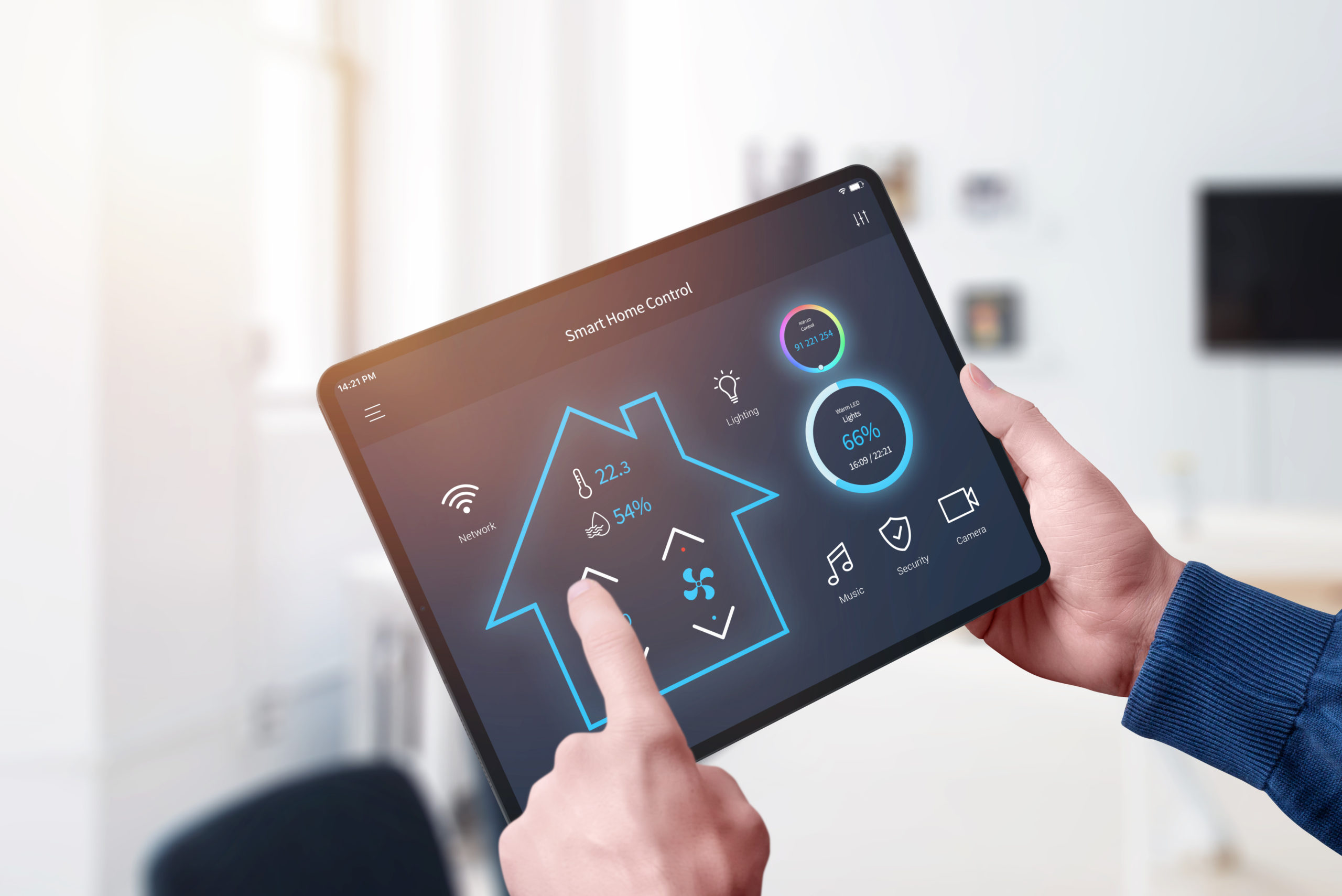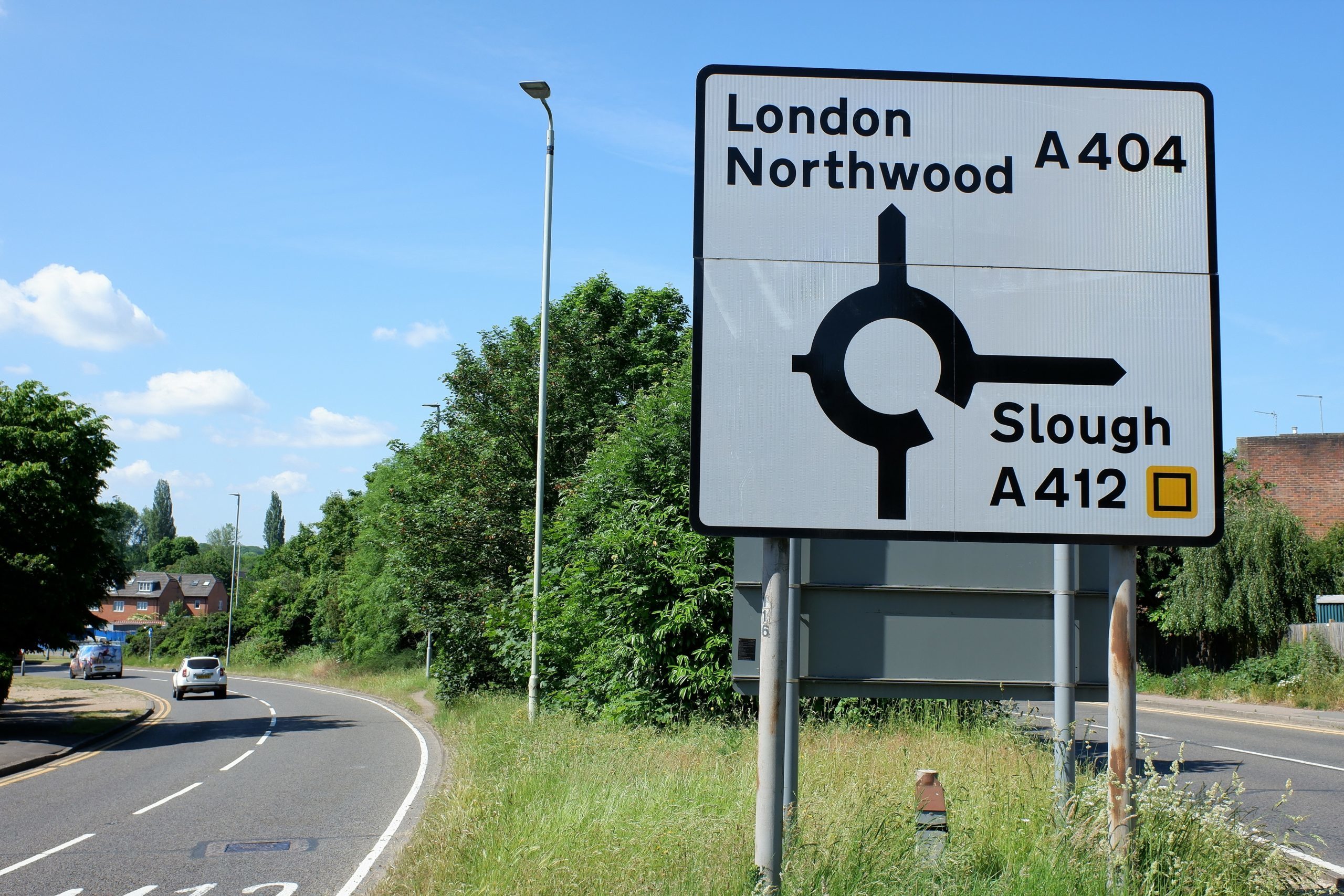Can I get broadband without a contract?
What is a monthly rolling contract?
A monthly rolling contract is a contract that continues to roll over every month unless someone stops it. Rolling monthly contracts are great for customers as it means they can cancel at any time meaning they really do have nothing to lose.
When signing up for a new broadband provider you need to make sure that the package your choosing is the right package for you. Most broadband packages require you to tie into lengthy 12-to-24-month contracts which can be scary when you haven’t been with a provider before.
How does a monthly rolling contract work?
When you sign up for a monthly rolling contract under the terms of a rolling contract broadband deal, your contract will automatically continue to run from month to month unless you decide to end it. You’re free to cancel your broadband any time you like with no termination fees. So long as you give 30 days’ notice, you’re good to go.
Naturally, that gives you much more freedom than your standard, longer-term broadband contracts that typically feature minimum terms of 12 months, 18 months or even 24 months.
What are the pros and cons of no-contract broadband?
If you’re not sure if a no-contract broadband package is right for you then here are some pros and cons that might help you decide:
Pros:
- Really handy if you’re in short term let or between homes
- A good idea if you think you may need to relocate for work
- They’re the most flexible deals around and you only need to give one month’s (30 days) notice
- No termination fees
- Service and speeds are in line with longer-term broadband deals
Cons:
Here at Purefibre Internet there really are no cons when signing up for our monthly rolling contract broadband.
- Other providers often charge a set-up fee however not with us here at Purefibre Internet as we offer free setup and installation when you quote ‘pure gig’ at sign up.
- Most other providers offering monthly rolling contracts won’t offer incentives however here at Purefibre we have a customer referral scheme entitling you to 1 month’s free broadband for every verified customer you recommend.
- Monthly rates are sometimes higher than the same service on a longer-term contract however this isn’t the case with us we like to keep our prices low and service quality high.
Signing up for a monthly rolling contract
If you’re thinking of signing up for a monthly rolling contract it really is very simple! All you have to do is head over to our website www.purefibre.net, and check your postcode on our postcode checker. If we offer service in your area, then all you need to do is fill in an enquiry form and a member of the team will contact you to get you signed up.
What speed broadband do I need?
Superfast broadband sounds appealing but is it something that you need?
Speed is a crucial consideration when deciding which broadband package is right for you. If it’s too slow you’ll struggle to do the things you need to do; too fast, and you may be paying for a service you don’t need.
What is a good internet speed?
The speed of your home broadband is important. If it isn’t fast enough for the number of people you live with, and the things you do online, you’re likely to experience irritating delays and connection issues. These will be worse when everyone tries to get online at the same time.
Broadband speed is measured in ‘megabits’, and most of us understand that the higher the speed, the faster you can download files and the higher quality your streaming content will be. What many people struggle with is how to apply average broadband speeds to the needs of their household, so they can choose a broadband deal with an internet speed that is right for their requirements.
As a rule, you’ll need 10Mbps per broadband user. Double this to 20Mbps for each user they’re streaming 4K content or gaming.
A good internet speed matches your personal needs the best. Common broadband speeds in the UK start from as little as 10Mbps and can go faster than 1Gbps which is 100 times faster. A ‘good’ internet speed is fast enough to handle everything your household does online but isn’t so fast that you end up paying for speeds you don’t need.
Nowadays the best guidance that we can give when looking for a broadband provider is that you should probably look for a fibre broadband deal first. Some providers still offer 10Mbps copper internet, but often at prices that are either similar or more expensive, than the cheapest fibre deals.
What can affect broadband speed?
Several factors can affect your broadband speed. Things like the number of people trying to connect to the internet, what time of day you’re trying to get online and where your router is located can all influence the speed of your broadband.
There are 5 main things to consider when looking at the speed of your internet.
- Device speed and connection – If your Wi-Fi is feeling slow it could be due to the device you are using. Typically, the newer your equipment the faster the wireless speed it will support. A smartphone from 2013 can handle around half the Wi-Fi speed of a modern smartphone.
- How you use your broadband – Broadband speed is shared with every single device connected to your router. So, if five devices are all using the internet at the same time, they will each get roughly a fifth of the available speed. Streaming and gaming also use more of your bandwidth, so if anyone in your household is doing this it could make the broadband slower for everyone else.
- If your router is switched off – It is important to make sure that you leave your router on and always connected. This will mean that your internet service provider can give you the fastest and most reliable service and ensure your router is kept up to date.
- Time of day – Like rush-hour traffic, the speed you’ll get depends partly on how many people are using the network. During peak periods, usually 8 pm to 10 pm, you may sometimes notice slightly slower speeds.
- Viruses and online threats – If your computer or laptop has picked up a virus this can slow everything down.
What internet speeds do you need for your usage?
If you live alone or with one other person who also uses the internet, and the most bandwidth-intensive things you do online are internet shopping and browsing social media, your needs will likely be met by ADSL / standard broadband.
ASDL or standard broadband is offered by most UK providers and is often the cheapest broadband deal as it’s typically slower and a little less reliable than fibre and mobile broadband. It uses pre-existing BT copper phone lines to send and receive data, with a typical speed of around 10Mbps. Despite being the cheapest option, standard broadband is perfectly adequate for a couple of light internet users, so there’s no need to pay over the odds for your connection.
In a large household, while you may sit down and enjoy streaming movies and TV together on occasion, it’s likely that at least some of the time, you’ll be in different parts of the house doing your own thing online. The more people that use your broadband connection at any one time, the more bandwidth you’ll need, especially if you’re streaming movies or downloading and using apps and games separately.
For a household of 3-4 people, an entry-level fibre-optic broadband package is usually a sensible choice if nobody owns a 4K TV and streams in 4K UHD resolution, works regularly from home, or downloads games or large documents. This type of broadband deal will typically offer a speed between 30-60Mbps. You could however choose a faster speed which could help future proof your broadband usage, particularly if you have growing kids who are spending more and more time online.
If you have a larger than average family or live in shared student accommodation, there’ll likely be times each day when everyone wants to get online separately. In a busy household, you’ll want to make sure you have a reliable connection to avoid issues like buffering or slow-downloading games and documents, so aim for a fast fibre optic broadband deal with an average speed of at least 63Mbps. Some fibre optic deals now offer speeds of up to 900 or 1000Mbps (now available from www.purefibre.net).
What are the benefits of having faster broadband?
There are many advantages to having access to the fastest high-speed internet. From improving casual Internet browsing to faster video streaming, the benefits of having the fastest internet are worth the investment. Consider the following rewards for investing in high-speed Internet:
- With high-speed Internet, pages will load at a faster than average speed and will require less page reloading.
- As many people enjoy browsing the Internet with many tabs open, without a high-speed connection this becomes an issue.
- If you invest in high-speed Internet, you can have many pages open at one time, even with video and photos present on each page.
High-speed Internet service is worth the investment for those with families looking for entertainment, and those who need a strong network for their careers. Not only will you be able to browse the Internet without having to reload pages, but you will also be able to open multiple pages at the same time with lightning-fast speed.
What is the Internet of Things
What is the internet of things?
The internet of things (IoT) is the concept of connecting any device to the internet or other connected devices as long as it has an on and off switch. The IoT is a giant network of connected things and people all of which collect and share data about the way they are used and about the environment around them.
How does internet of things work?
Devices and objects with built-in sensors are connected to an IoT platform, which integrates data from the different devices and applies analytics to share the most valuable information with applications built to address specific needs.
These powerful IoT platforms can pinpoint exactly what information is useful and what can safely be ignored. This information can be used to detect patterns, make recommendations, and detect possible problems before they occur.
For example, if you own a car manufacturing business, you might want to know which optional components (leather seats or alloy wheels, for example) are the most popular. Using Internet of Things technology, you can:
- Use sensors to detect which areas in a showroom are the most popular, and where customers linger longest.
- Drill down into the available sales data to identify which components are selling fastest.
- Automatically align sales data with supply, so that popular items don’t go out of stock.
The information picked up by connected devices enables you to make smart decisions about which components to stock up on, based on real-time information, which helps you save time and money.
With the insight provided by advanced analytics comes the power to make processes more efficient. Smart objects and systems mean you can automate certain tasks, particularly when these are repetitive, mundane, time-consuming, or even dangerous.
Why is internet of things important?
Better Decision Making – Since devices have multiple sensors, they can acquire considerable data from numerous sources, giving them more information to work with when acting on data received. A great example is smartphones. The device automatically track your behaviours on its interface and makes suggestions based on your activity, location, and age.
The phone can also keep tabs on various activities. This includes the amount of screen time users spend each day, power consumption, and sleeping patterns. Massive amounts of data are being collected and sent back to smartphone companies each day to improve features on their devices.
With the constant influx of big data, companies begin to see trends in the usage of their devices and can immediately pinpoint their strengths and weaknesses. This insight would not be possible without the help of embedded sensors and processors which analyze the data.
Real-time Tracking and Monitoring – The potential for web-based tracking and monitoring systems is enormous. IoT tracking provides an efficient means to track and monitor anything from vehicle fleets, stolen goods, or shipping containers. Particular devices can even detect changes in the environment. There are multiple industries where IoT trackers can immensely improve the efficiency of companies. A malfunction in these products can lead to enormous losses for the company.
IoT-based trackers need to be reliable to provide the best services. These devices should provide the following:
- Real-time data analytics – Fast, accurate data is required in the industry to allow for quick, informed decision-making when assets or changes in the environment are being monitored.
- Secure communication – Companies usually track and monitor high-value assets. It is essential that the shared data is protected and not under the threat of hackers.
- Stable connectivity – The device should securely provide helpful information on asset locations, machine functionality, and temperatures. This is required at all times and from anywhere on the planet.
Automation – A big reason for the invention of IoT is convenience. Smart devices that automate daily tasks allow humans to do other activities. These devices ultimately lighten people’s workload. Smartphones allow us to connect with people from all over the world. We can schedule when to send messages and even use dictation to avoid typing ourselves.
Then there are smart fridges. Imagine having one that can detect when foods are about to expire and notify the owner to eat that food before it’s too late. Perhaps the smart fridge could even register that the milk is nearly finished and automatically order more. Another example is a self-driving car, connecting to the Internet to find the quickest route to a destination. This is the ultimate convenience for humans. The room for innovation within IoT is massive.
More Efficient Personal and Business Tasks – Web-based devices save people money and time. This includes planning work schedules, time tracking, effective communication, and setting reminders for daily tasks. Having IoT devices track and order things for you, turn lights off automatically when you leave the room, and manage tasks for which you don’t have time is the ultimate convenience!
More and more of these devices will become available for use over the coming years, with an estimated total number of IoT connections to reach 27 billion in 2024. It’s no secret that human productivity has gone up with the technological age. People are busier than ever before, thanks to IoT. It’s incredible to have the opportunity to do important things like spending time with family while an IoT device takes care of mundane activities.
What is an example of an internet of things device?
There are several top devices in the market. Smart Mobiles, smart refrigerators, smartwatches, smart fire alarms, smart door locks, smart bicycles, medical sensors, fitness trackers, smart security systems, etc., these are just a few examples of IoT products.
Where does internet of things go next?
It is estimated that by 2025 there will be more than 22 billion IoT devices. A quick look back shows where IoT devices are going. Consider: In 2016, there were more than 4.7 billion things connected to the internet, according to IoT Analytics. Fast-forward to 2022 the market is estimated to have increased to nearly 18 billion IoT devices.
How much should you be paying for your broadband?
What is the average cost of broadband in the UK?
How much should you be paying for your broadband? Staying connected has become a vital part of living, so much so that paying for internet is now considered an essential bill to pay, along with gas, electricity, water, and council tax. But bills can be expensive, especially once you add up the cost of all your outgoings. With the cost-of-living increasing year on year, the average household bills continue to increase.
The cost of broadband can really vary depending on your provider, what speeds you are looking for and whether it’s a ADSL or fibre connection.
Households with a standard ADSL connection paid an average of £28.33 per month for both their broadband and home phone service.
Broadband and phone customers with a superfast fibre connection, however, paid an average of £39.75 for the dual service.
Meanwhile, households with the fastest speeds paid £61.90 per month on average for an ultrafast broadband connection with landline.
Here at Purefibre we offer we offer our ultrafast fibre broadband connection for just £36 per month.
How to save on your broadband bill?
With the cost of living continuing to increase people are now more than ever looking for ways to help reduce their bills. Here are a few tips on how to reduce your broadband bill:
- Don’t pay for more than you need! – The faster the broadband the more expensive it usually costs. It’s best to work out how much you use and then buy a package that best suits your usage, so you don’t end up paying for what you don’t need.
- Choose the right contract length – Broadband contract lengths can range from monthly rolling agreements, all the way to two-year commitments. Depending on your living arrangements, the length of your contract is an important factor when choosing your next broadband deal. It can be tempting to choose a shorter contract, but these often come with higher monthly costs.
- Watch out for price increases – To stop customers leaving early after their price increases, many providers have now added a minimum annual price increase to their T&Cs before you sign up. If you choose one of these providers, you’ll have to agree to a yearly price increase. And unlike some other price increases, you won’t be able to leave your contract free of charge because of it. Many providers don’t bake annual price increases into their contract terms, though. But this doesn’t mean they’ll fix their prices either. You should be able to leave your contract early for free if your provider increases its prices by an amount higher than inflation. So, if your provider doesn’t have price increases built into its contract, but it still hikes your bills by more than inflation, you should be able to leave penalty-free.
What are your options when it comes to switching providers?
Finding the right broadband provider can improve your service and help ensure you’re not overpaying.
- Before you start thinking about switching broadband provider you need to check your current contract and make sure you’ve completed the minimum term. If you’re still under contract, you could be hit with a heavy cancellation fee if you try to leave early. If you’re outside your minimum contract period, your broadband provider will be keen to keep your custom and may even offer you a cheaper broadband deal or another incentive to stay.
- When choosing a new broadband deal, if you haven’t already found a broadband package that works for you it’s a good idea to check which providers offer broadband where you live and to compare the available offers on a comparison website. Once you’ve got a deal in mind, make sure you have all the details on exactly what you’ll be signing up for and for how long. If you’re not given one by the provider, ask for a speed estimate for your address, as well as checking for any connection or router charges and the total monthly cost.
- Contact you chosen provider. If you’re switching between providers who use the Openreach telecoms network such as BT, EE, Sky and TalkTalk then your new provider will arrange the whole transfer for you. They’ll let your old provider know that you want to move and you’ll then be sent notification letters (from your old and new providers) confirming what’s happening and when the transfer should take place as well as setting out any early termination charges that you’ll have to pay.
- Contact you existing provider. If you’re switching to or from a separate network such as the ones used by Virgin Media or Purefibre Internet, you’ll need to stop your service with your current provider and start a new one with a new provider. In these circumstances you’ll need to contact both your current provider to cancel your contract and your new provider to arrange your new broadband service. You’ll then receive notification from the provider you are leaving that your contract is ending (and notification of any charges associated with this), and will be given a new contract from your new provider which will tell you when your contract is due to start.
Plume Smart Homes
What is a smart home?
A smart home uses one or more internet-connected devices to let you control and see what’s going on in your home, whether you’re in another room – or another country.
All you need is a smartphone or tablet, a very reliable internet connection and some smart devices, and you can potentially automate tasks like feeding your cat and watering the plants every day, even if you’re on holiday. You could check on your new puppies while you’re at work, or even double-check that you’ve switched the heating off.
In a smart home, you may be able to control and adjust your:
- Lighting
- Heating
- Access
- Security
And a whole range of appliances
What is a smart home device?
For your home to become a ‘smart home’, you need a few smart devices. They connect to the internet and usually have a smartphone app allowing you to monitor the device remotely over wifi. Here are some popular smart devices:
- Smart speakers – where most people begin building their smart home
- Smart displays – if you want a visual display as well as voice activation
- Smart TVs
- Smart thermostats
- Smart lighting
- Smart security – windows, doors, locks, cameras and motion detectors
- Smart kitchen appliances
- Smart washing machines
The smart home devices you choose will depend on what you want to monitor and operate remotely. If you’re concerned about security, comfort, convenience or energy efficiency, then all of these can be enhanced through the use of a smart home device and a smart home system.
Why should you have a smart home?
Have you been thinking about making your house a ‘smart home’? It might be more beneficial to you than you think. Here are some of the benefits that come with having a ‘smart home’.
- Saving energy (and money) – For a lot of people who decided to turn their house is to a smart home is the potential to save energy which will in the long run lead to them saving money. Smart thermostats like those from Nest can control heating and cooling more efficiently. Other smart products, such as lights, plugs, and appliances, can be set to shut off when not in use.
- Making life easier – A smart thermostat can learn your habits and automatically adjust the temperature based on your unique schedule. It also lets you manually and remotely adjust the temperature through an app. Smart TVs, dishwashers, refrigerators, and washers and dryers all allow remote access and control and can alert you to information that’s relevant to each appliance. For example, your washing machine can detect when energy consumption is the lowest in your area and turn on during that time, or your refrigerator can scan your groceries, letting you know when the eggs are about to expire or how much milk you have left! Smart lights allow you to control the lighting in every room of your house from your mobile device. Did your seven-year-old forget to turn off the lights in the kitchen? You can do it on the way to school right from your phone. Or configure your lights to turn on and off at set times, and never worry again if someone forgot to turn off the lights before you leave for the day.
- Safety reasons – A multitude of smart home devices can alert you to safety or security issues remotely. Get alerts no matter where you are for leaks, for leaving the garage door open, for smoke, for when someone rings your doorbell, or if you left something plugged in that really should have been turned off before you left the house.
How can Plume help to make your house a smart home?
Most consumers define the phrase ‘smart home’ in a relatively simplistic manner: the ability to remotely control appliances, lighting, security and/or electronic devices, generally via a smart app or digital voice assistant product. While this baseline definition is accurate, it doesn’t fully convey the potential of what is quickly becoming known as Smart Home 2.0 when reliable and robust connectivity to cloud-based solutions unleashes capabilities and usage models which have not yet been contemplated.
Over the past few years, many smart home technologies have gone from cutting-edge to the mainstream. Consider digital voice assistants, for example. Research predicts we’ll see 8.4 billion digital voice assistants including smart TVs, wearables, and smart speakers such as Amazon Alexa and Google Home in use around the world by 2024. That’s an increase of 113% compared to the 4.2 billion devices in use at the end 2020.
People with such technology in their homes won’t have just one or two devices, they’ll have on average around 21 in use. Plume data indicates that the number will then climb and exceed 38 by 2024. These devices will include smart appliances, remote-enabled entertainment systems, control and monitoring systems for home security, smart thermostats, smart light bulbs, smart doorbells, and more. More smart home devices are entering the market every day, with many more on the horizon. Among them: are faster and smarter WiFi routers, health and sleep monitors, energy management systems, apps for monitoring emotional health, monitoring systems for the elderly, and even smart toilets and smart paints. These next-generation devices will become mainstays of the future of the smart home ecosystem (what some call Smart Home 2.0).
The demand for connected home applications and devices is expected to dominate the Internet of Things market over the next few years, it’s been reported that by 2023, it predicts the consumer segment will be nearly three times as big as the business segment. And the number of connected devices will be three times bigger than the number of people worldwide.
What's the difference between ADSL and fibre broadband?
ADSL and fibre are the two most common types of internet connection and they serve most homes in the UK. Fibre broadband is fast becoming the go-to choice for new broadband connections thanks to its fast speeds and ever-increasing availability. Fibre is however still only available in around 90% of UK households.
What is ADSL broadband?
ADSL is a service that is provided using existing BT phone lines. ADSL stands for ‘Asymmetric Digital Subscriber Line’. ADSL broadband works through a fixed-line access network, otherwise known as telephone lines in the street. These are made up of copper wires and exchange a series of digital messages which translates the information you receive. These messages are split into either phone or internet signals using a microfilter, which is a small box that fits into the main BT socket in your home.
ADSL is not as fast as fibre, but it is still a reliable choice. The speed you receive will depend on your distance from the telephone exchange, so those who live closer will likely get a faster connection. The age and health of the copper wires providing your connection can also play a part in connection speed.
What is fibre broadband?
Fibre broadband is a type of high-speed broadband. Fibre broadband uses fibre optic cables, which are better at transferring data than standard copper cables. When you perform a task online, light bounces and pulses through the tubes to push your data through the network. A fibre connection also tends to be more reliable, so is ideal for busy households where everyone is online at the same time using lots of different devices.
What is full-fibre broadband?
Full fibre broadband is known by many names, including True Fibre, Fibre to the Premises or Fibre to the Home. This means that fibre optic cabling is used from the local exchange, all the way to the end-user premises, relying on no copper-based telephone lines.
Full fibre is the future of broadband, a technology that is guaranteed to see users through the 2025 Switch Off and beyond. FTTP is a Single Order broadband product, meaning no WLR is required as it does not utilise the traditional copper telephony network at all.
A pure fibre connection can achieve gigabit speeds, making it the fastest broadband technology available today. For both business and residential customers, broadband is one of the most important services they rely on, whether it’s for entertainment such as streaming and gaming, or for essential systems that keep a company running. As our digital lives evolve, we are all becoming more aware than ever of the effects of poor connectivity, which is why FTTP is the number one solution that everyone should be looking to move to once it becomes available to them; not only will the higher speeds and lower contention transform the way they use the internet, but it will also future proof their home or business long past the Great Switch Off.
Should you upgrade to fibre broadband?
A common question that gets asked is does fibre broadband make a difference? Well, if you’re in a shared house or have a family, you’re probably using more than one device to connect to the internet. Now imagine the same thing happening in homes across the country at specific times of the day. Connecting to your home broadband at peak times could mean slower download speeds.
Imagine if you’re in the middle of downloading some critical files for work and your connection is slow. And if you’re streaming, you might feel you’re falling behind all your friends who’ve seen the latest must-see TV. If this is something that sounds familiar, then fibre broadband might be right for you.
The increasing demand for streaming services, smart homes, gaming and video calls means we need more data than ever before. Faster connectivity in homes will mean that it is quicker to play online games, download films and music or use streaming services.
If fibre broadband is available in your postcode, switching to it is easier than you may think. Head over to our pricing page and take a look at our 1Gbps plan.
Can I set up parental controls on my broadband?
Most broadband providers can provide their customers with a range of different parental control features. As children are learning how to use the internet from a very young age parental control features are becoming increasingly more important.
What are broadband parental controls?
Parental controls allow you to control both what your child has access to online and for how long they have access to it. They can filter out inappropriate content, such as violence and pornography, limit what can be shared in terms of images or online conversations and set screen time limits. Parental controls can be set at three different levels:
- At network level – With your broadband provider
- At device level – On your phone, tablet, games console or computer
- At application level – Within browsers, apps, games and streaming services
What are some common parental control features?
The features and tools for parental controls vary depending on your internet service producer however some of the most common parental control features are:
Content filters – Content filters are a tool typically included in parental control software. Filters aim to reduce the chances of children coming across inappropriate content while surfing the web. Some filters allow parents to set different levels of access for different children, meaning younger children can be exposed to less.
Time access and monitoring – Whether your children are addicted to playing games, watching their favourite TV show or chatting to friends on social media, some parental control programs allow you to set times for them to be online. After this point, the internet will be turned off. You can also restrict access to certain websites at certain times of the day. Monitoring it lets you see which sites your children have been using and what they’ve been doing on them. If you suspect your child has been exposed to something that’s not age-appropriate, monitoring can be handy for double-checking whether a site has suitable content or not.
Internet time outs – An internet time out gives you the ability to briefly freeze or pause Internet access for a person or specific device with just a few taps. This lets you easily manage Internet access in real-time in addition to setting Device Freeze schedules.
Do parental controls work?
Having parental controls in place can give you peace of mind, especially as it isn’t possible to supervise your kids’ internet use constantly. But there are still some nagging questions: how good are they, and could your kids bypass them if they wanted to?
There are a few things that you should consider:
- Parental controls will block every site on their blacklist in each of your chosen categories. But that doesn’t mean they will block every single site that exists in that category, or that they won’t block perfectly acceptable sites by mistake. There’s often a lack of transparency about what exactly is being blocked so you might not know until you chance upon one of the taboo sites.
- In most cases, the controls affect all devices connected to your network. Set them too strict and you’ll end up blocking sites that you want to look at yourself.
- Your broadband provider’s parental controls only work on your broadband network. When your children take their tablets or phones to a friend’s house or even connect via a mobile network, the safeguards will no longer be in place.
Do all broadband providers offer parental controls?
All broadband providers have some form of parental controls, when comparing broadband deals you can consider what each provider offers and decide which is best suited for you.
Is your current provider welcoming in the New Year by hiking your broadband prices?
Millions of households are facing higher broadband bills, courtesy of annual price rises introduced by several of the UK’s major providers. It has just been announced that Virgin Media broadband customers can expect to receive a notification informing them of the new price rise. It has been said that from March 2022 customers can expect to see an increase of around £4.70 a month for their broadband package, totalling £56.40 a year.
What can I do about my broadband price rise?
Broadband providers can change the terms of a contract so long as they give you a months’ notice. If your provider increases your monthly price beyond what you agreed when you signed up, they should:
- give you at least one months’ notice of the price rise
and
- allow you to exit your contract without penalty if you choose to.
Some providers have contracts that set out that the monthly prices you pay will increase at certain times during the contract, for example increasing by inflation each year. This is something that should have been made clear to you when you signed the contract. You should make sure to check your contract terms if you’re not sure.
Do some broadband providers fix their prices?
Promises to fix customer broadband bills the entire lifetime of a contract is frequently becoming more and more uncommon, but there are some providers that do still offer them. We are one of them! Sign up for Purefibre’s 1 Gbps service and fix your monthly price forever. T&C apply *you must remain a Purefibre customer and maintain regular monthly payments to qualify for a contract freeze.
What is broadband?
Broadband is a high-speed internet connection that allows you to enjoy everything the online world has to offer. Broadband is a connection that allows you to use multiple devices to surf the web simultaneously. The average home now has around 10 devices that require an internet connection and broadband allows them all to connect to the internet at the same time.
Are broadband and Wi-Fi the same thing?
Broadband and Wi-Fi are two terms that are often used interchangeably. However, they are two separate things and need to be understood clearly so that you get your internet basics right. Wi-Fi uses radio frequencies and signals to transfer data without wires and broadband is the transmission of data with the use of high-speed internet.
Broadband is a type of internet connection given by your internet service provider. Wi-Fi is a technology and one of the means of connecting to broadband to access the internet. Your broadband can be accessed via a LAN cable directly connecting your router and device. However, the advantage of a Wi-Fi connection is the ability to access information without a physical connection between two devices.
How does broadband work?
A Broadband internet service is supplied by an internet service provider (ISP). The service provider supplies the service, the router and if required, arranges for the socket to be installed. Some ISPs have their own internet infrastructure e.g Purefibre Internet and Sky, however, this is costly and complex, that’s why most ISPs use shareable networks to provide their service.
What are the different types of broadband?
Broadband packages come in all shapes and sizes, from ADSL broadband to cable broadband and 3G, 4G and in recent years 5G mobile broadband. A broadband connection, like a telephone line, is never switched off and can be accessed at any time.
What is ADSL broadband?
ADSL is a service that is provided using existing BT phone lines. ADSL stands for ‘Asymmetric Digital Subscriber Line’. ADSL broadband works through a fixed-line access network, otherwise known as telephone lines in the street. These are made up of copper wires and exchange a series of digital messages which translates the information you receive. These messages are split into either phone or internet signals using a microfilter, which is a small box that fits into the main BT socket in your home.
ADSL is not as fast as fibre, but it is still a reliable choice. The speed you receive will depend on your distance from the telephone exchange, so those who live closer will likely get a faster connection. The age and health of the copper wires providing your connection can also play a part in connection speed.
What is cable broadband?
Cable broadband is a form of internet access that uses the same infrastructure as cable television. Cable uses mostly fibre-optic cables to pass digital signals, unlike an ADSL connection which only uses copper wires. The fibre optical material in the wires provides a secure connection for the signal to travel, resulting in a much more reliable signal and less chance of distortion than ADSL. However, cable is not the same as fibre optic. For the last mile between your local telephone exchange and your home, the cable connection is carried in coaxial cable while fibre optic travels through copper wires. Coaxial cable can carry data faster than copper phone lines, making cable packages generally faster than other options.
A cable connection can also carry audio-visual signals, which is why you can get digital TV services from some cable providers.
What is fibre broadband?
Fibre broadband is a high-speed internet connection that uses fibre optic cables. These cables are quicker at transferring data than standard copper cables used in ADSL; meaning it’s a great choice if you regularly enjoy streaming films and music.
There are two types of fibre broadband connection: FTTC and FTTP.
What is FTTC fibre broadband?
FTTC is otherwise known as superfast broadband. FTTC (fibre to the cabinet) broadband uses a full fibre optic connection from the provider to the cabinets (the green ones you see in many streets), and copper wire from that to your home from the cabinet.
FTTC broadband is the most common setup for broadband in the UK, and makes use of existing street cabinets and infrastructure, curbing the need to dig up any roads in established areas. This makes it a lot cheaper to install than FTTP broadband, and the reason why most of the UK can access it. However, because it still uses inefficient copper wire, speeds are far lower than full-fibre connections.
What is FTTP fibre broadband?
FTTP Fibre is an ultrafast connection. FFTP means ‘fibre to the premises’ – it’s also sometimes called FTTH (fibre to the home). Rather than reach your home via the green cabinet at the end of your street, FTTP travels directly from your internet provider.
Unlike FTTC broadband, FTTP uses all fibre optics, making it the fastest type of fibre on the market. It can reach speeds of up to an impressive 1Gbps. 1Gbps is extremely fast for those who are unsure on what is considered a fast broadband.
What is mobile broadband?
There are some types of internet services that do not require a fixed line for installation, for example, mobile broadband. This wireless connection uses mobile phone networks and satellites to transmit a broadband service through an ISP, providing long-range internet access so you can browse the internet using mobile data or Wi-Fi on your phone.
Welcoming a brand-new internet service provider into Slough.
Purefibre Internet to launch in Slough following CityFibre’s £24m Full Fibre network investment
- Purefibre Internet (Purefibre) will offer Full Fibre internet to residential properties in Slough, where CityFibre is investing £45million in rolling out a Full Fibre network across the city
- The first customers are expected to be connected in October this year
- Purefibre joins a growing list of consumer ISPs to offer Full Fibre services to consumers over CityFibre’s national open access networks
CityFibre, the UK’s first national digital infrastructure platform, and Purefibre have today announced an agreement that will bring reliable, Gigabit speed broadband services to homes and businesses by joining CityFibre’s rapidly expanding national open access networks in Slough.
CityFibre is currently engaged in an up to £4billion Gigabit City Investment Programme and Purefibre will be the latest consumer internet service provider to join its networks.
Slough is among the first locations to enjoy access to Purefibre’s competitively priced 1 Gbps service, with the first customers expected to go live in December.
It will be among the fastest broadband services available when both downloading and uploading, transforming customers’ digital capabilities. The service will provide sufficient bandwidth to unlock the full potential of every device in the home, while providing a solid platform for smart home applications of the future.
The service will be delivered over Slough’s full fibre network, which CityFibre is deploying as part of a £24million private investment that will bring next-generation digital connectivity within reach of almost every home and business locally.
CityFibre began construction of the network in October 2020.
Speaking of the agreement, Stacey King, City Manager at CityFibre, said: “We are delighted to welcome Purefibre onto our Slough network, and greatly look forward to supporting their exciting Gigabit-speed home broadband service.
“Their reputation and quality services make them a perfect partner and we are excited about helping even more homes and businesses take advantage of the huge benefits that Full Fibre has to offer.”
Mark Trojacek, CEO at Purefibre, said: “We are delighted to be partnering with CityFibre in Slough. With over ten years’ experience of delivering high speed internet services over full fibre networks, our aim is to offer a simple, straightforward high-speed package with no complex contract terms and honest, competitive pricing.
“Slough has long been at the forefront of commercial innovation and while major businesses in the town have benefitted from access to world class services, the provision of reliable and innovative residential services has failed to keep pace.
“Residents in Slough can now expect a consistent internet experience backed by exceptional customer service and we look forward to welcoming new customers throughout Slough, and beyond, as the CityFibre footprint expands.”









